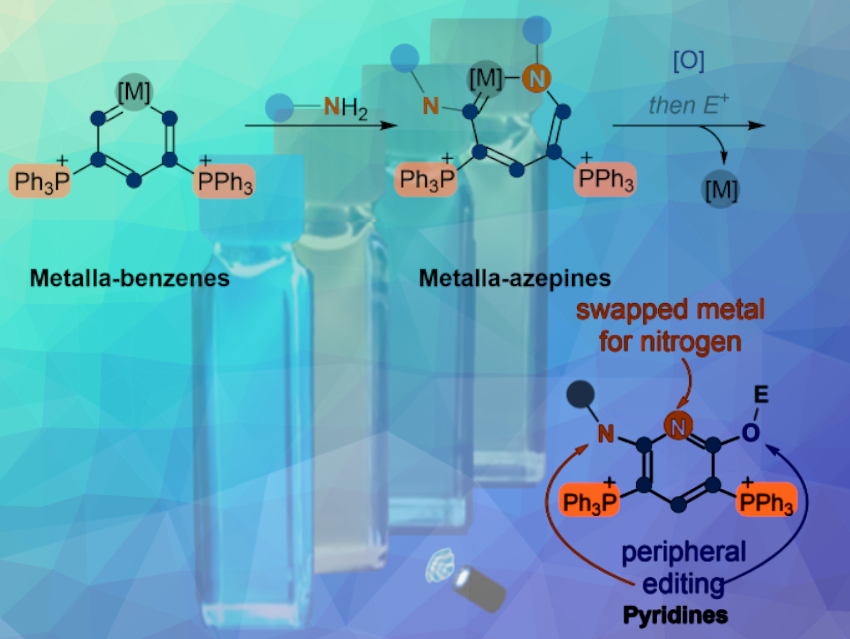Single-atom skeletal editing has emerged as a powerful tool for molecular structural modification, enabling precise reshaping of molecular frameworks by inserting, deleting, and replacing individual atoms. Metalla-aromatics—a unique class of aromatic compounds where one or more transition metals are incorporated into the aromatic system—can be considered potential candidates for previously unknown skeletal editing.
Hong Zhang, Xiamen University, China, and colleagues have introduced a methodology that achieves a metal-to-nitrogen swapping to generate fluorescent pyridine phosphonium salts, starting from readily available ruthenabenzene phosphonium salts and commercially available 2-aminopyridines.
The metal-to-nitrogen transmutation system operates via a distinctive mechanism involving ring expansion through single nitrogen insertion, as evidenced by the capture of metalla-azepine. This sharply contrasts with previously reported pathways that rely on seven-membered aza-metallacyclic intermediates, generated by insertion of CN/CC multiple bonds into either a metallacyclopentadiene-like intermediate or an azametallacyclopentadiene-like intermediate. Their tailored metalla-benzenes efficiently facilitate direct nitrogen insertion and metal deletion processes. These findings broaden the understanding of single-atom skeletal editing based on metalla-aromatics and are expected to inform the design of powerful transformation.
Given the multifaceted roles of nitrogen-containing compounds, modifications of the ring system, whether through skeletal or peripheral editing, to achieve the precise alteration are of much attention. In this work, 3,5-disubstituted metallabenzenes have been successfully used in skeletal editing to yield pyridine rings with two meta phosphonium substituents, showing tunable fluorescence behavior. This metalla-aromatic-assisted skeletal editing strategy is expected to steadily improve and provide highly efficient approaches for the precise construction of diverse cyclic compounds.
- Fluorescent Pyridine Phosphonium Salts via Transmutation of Metallabenzenes,
Yaowei Zhang, Feifei Han, Zhihong Yin, Yapeng Cai, Xiaoyan Zhang, Hong Zhang,
Nat. Commun. 2025, 16, 3632.
https://doi.org/10.1038/s41467-025-58855-7




